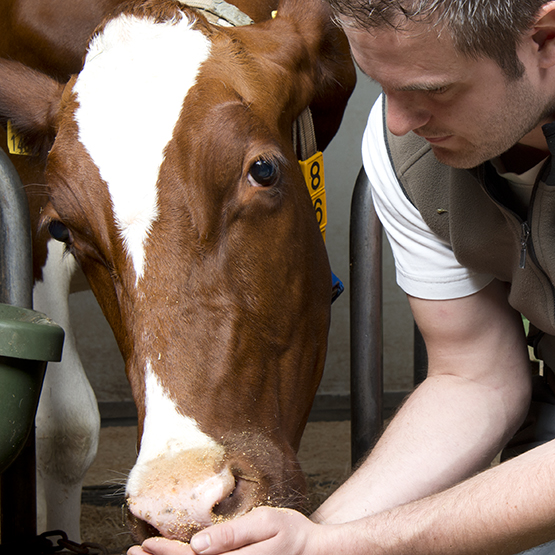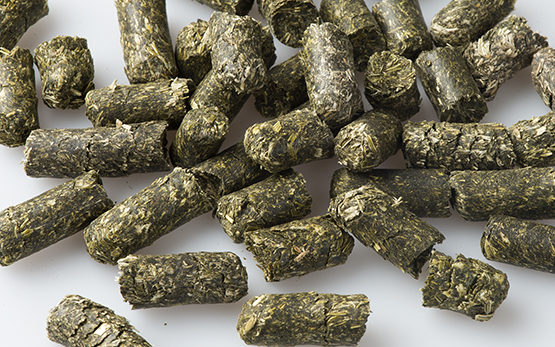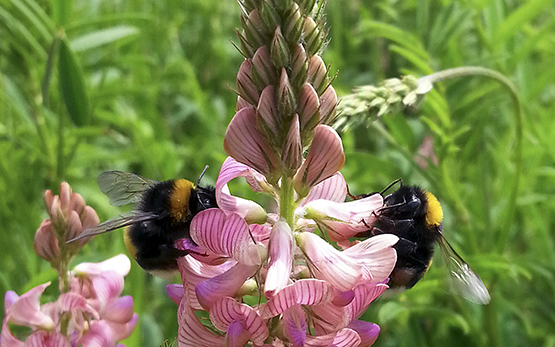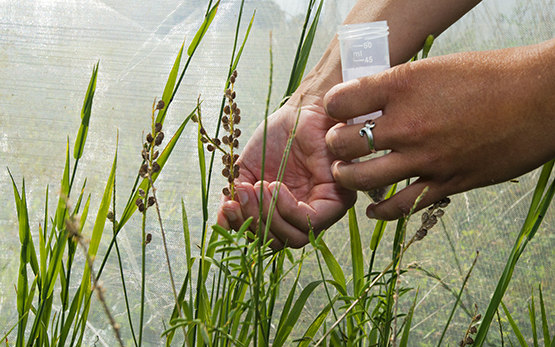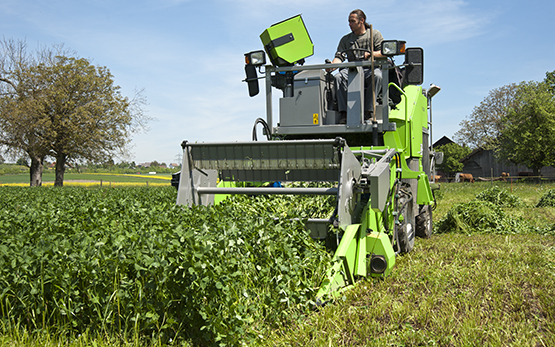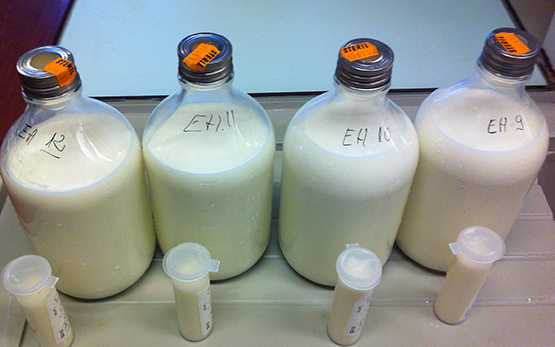Rhizobia bacteria on the roots of legumes enable the latter to fix nitrogen directly from the air. This enables higher yields in forage production and savings on mineral fertilisers. Sainfoin and birdsfoot trefoil, for example, also contain tannins which improve the quality of the milk and meat of ruminants.
Red and white clover, sainfoin and birdsfoot trefoil, alfalfa – Switzerland is home to an abundance of fodder legumes. Among these are species which, in addition to their beneficial properties for the agriculture and food sector, also contain tannins. These bioactive constituents of legumes are the focus of Agroscope research.
Tannins increase unsaturated fatty acids
Feed fats are split in the rumen of ruminants, where the rumen microbes convert them from unsaturated to saturated fatty acids. Consequently, the milk and meat of these animals contain comparatively high proportions of saturated fatty acids – an undesirable situation that it is hoped to change. What we are aiming for are polyunsaturated fatty acids. These not only form part of the essential nutrients – i.e. they are necessary for life, and cannot be synthesised by the human body – but are also credited with a whole range of health-promoting properties. Omega-3 fatty acids are meant to be particularly healthy.
For years now, therefore, efforts have been made to increase the unsaturated fatty-acid content in the milk fat and meat of ruminants via their feed. One possibility consists in boosting the intake of unsaturated fatty acids via the feed. Levels of linolenic acid – an omega-3 fatty acid – in meat and milk can be increased, for example, by feeding the animals flaxseed. Moreover, a diet that emphasises grass is more advantageous in this respect than mixed rations based on maize silage.
Another possibility might be to feed tannin-containing legumes to livestock. Tannins can bind with nutrients in the rumen of ruminants, protecting these nutrients from breakdown. What’s more, there is evidence that tannins influence the activity of rumen bacteria.
Tannins affect digestion
In Switzerland, tannins occur in fodder legumes such as sainfoin and birdsfoot trefoil. In a trial, Agroscope researchers fed inter alia alfalfa, sainfoin or bird’s-foot trefoil pellets to dairy cows. Since sainfoin has a higher tannin content than birdsfoot trefoil, the cows in the sainfoin group consumed more tannins. The result: linolenic acid content in the milk of cows fed the sainfoin pellets was 16% higher than in that of cows fed alfalfa pellets.
In a further trial, the milk of cows fed the sainfoin pellets was made into cheese. Agroscope experts observed a rise in linolenic acid content in the fatty-acid profile of the cheese.
For another trial, Agroscope researchers grew sainfoin and birdsfoot trefoil as well as alfalfa and red clover, and made silage from the first cut at the beginning of July. After this, the researchers fed sainfoin, birdsfoot trefoil, red clover or alfalfa silage to four groups of lambs comprising 12 animals each for four to five months. After slaughter, it was observed that the amount of linolenic acid as well as the sum of all omega-3 fatty acids was significantly higher in the meat of the lambs fed sainfoin silage than in those fed other silages.
Improving sainfoin yield and tannin content
Unfortunately, sainfoin on its own is low-yielding and a poor competitor compared to other species of forage plants – it needs the right partner plants. Moreover, it would be desirable to optimise the content and composition of the tannins in the plant in order to achieve a better effect.
Agroscope researchers studied the performance of 30 sainfoin provenances from all over the world in terms of yield, tannin content and tannin composition. It was observed that there were major differences in all these characteristics that could be systematically used for the improvement of sainfoin through breeding. The cultivated varieties on the market today are higher-yielding, while certain wild types are characterised by an especially high tannin content, or a particularly bioactive composition of the tannins.
In a three-year field trial, perennial ryegrass, meadow fescue and timothy have proven to be particularly promising partners for the cultivation of sainfoin in mixtures. All three supress weeds effectively whilst nonetheless allowing for a significant proportion of sainfoin in the mixture. Furthermore, detailed measurements have shown that the sainfoin performs well in terms of symbiotic nitrogen fixation. This result was not necessarily expected, since only small amounts of sainfoin have been cultivated in Switzerland over the last few decades – for which reason it was feared that the symbiotic bacteria might be missing from the soil.
Sainfoin helps to save on fertilisers
To date, only a few studies have been conducted in Switzerland, and indeed in the rest of the world, on the effect of tannin-containing legumes in dairy-cow feed. At Agroscope, further studies are planned to explore how these highly promising legumes can best be used in feed. Because it’s not just their positive effects on the fatty-acid profiles of milk and meat that make these plants interesting – their tannins also fix proteins in the rumen, allowing ruminants to better utilise proteins in the grass. Naturally, another desirable effect is the potential savings in fertiliser use owing to the ability of the plant roots to fix nitrogen.


